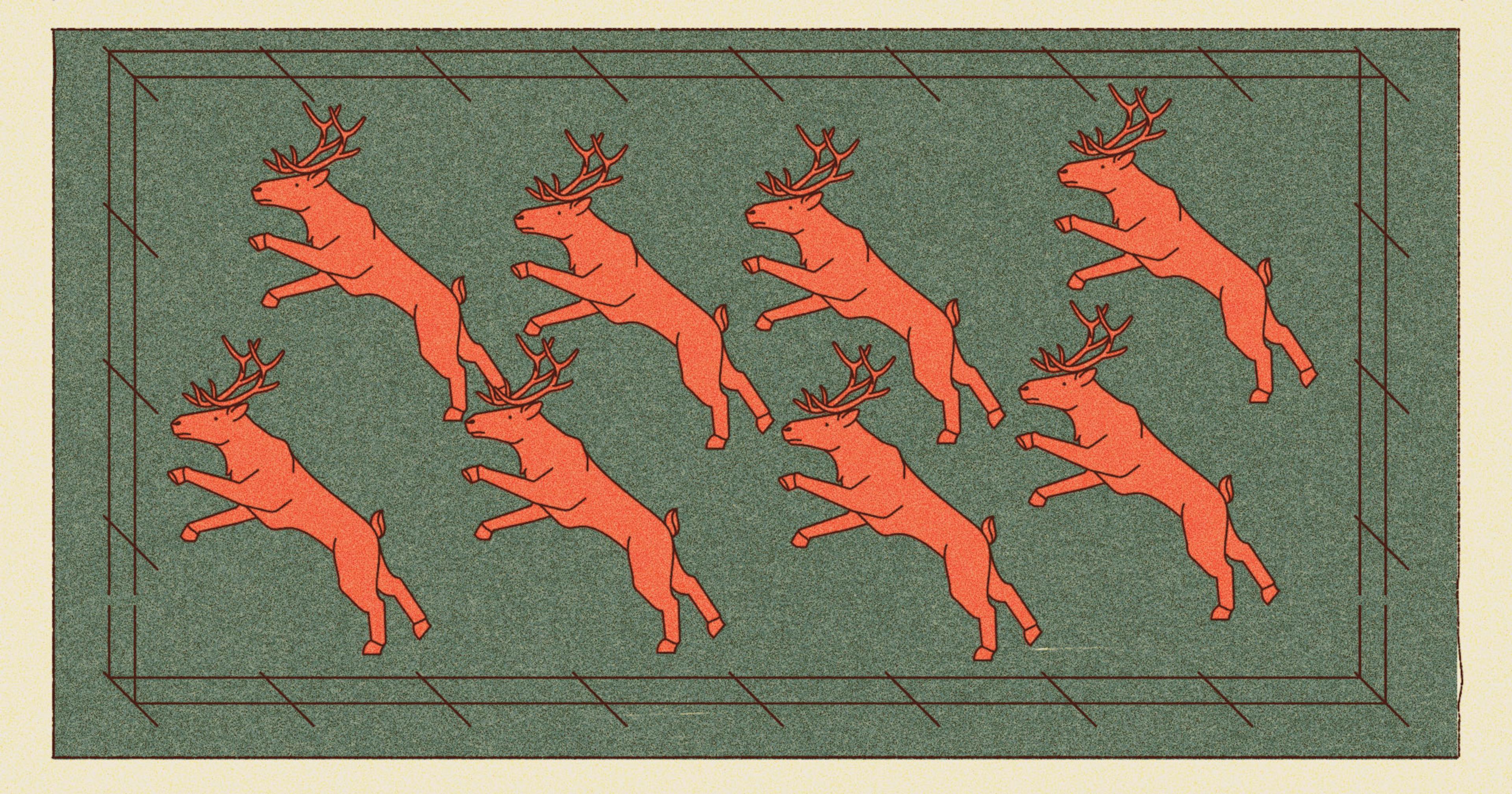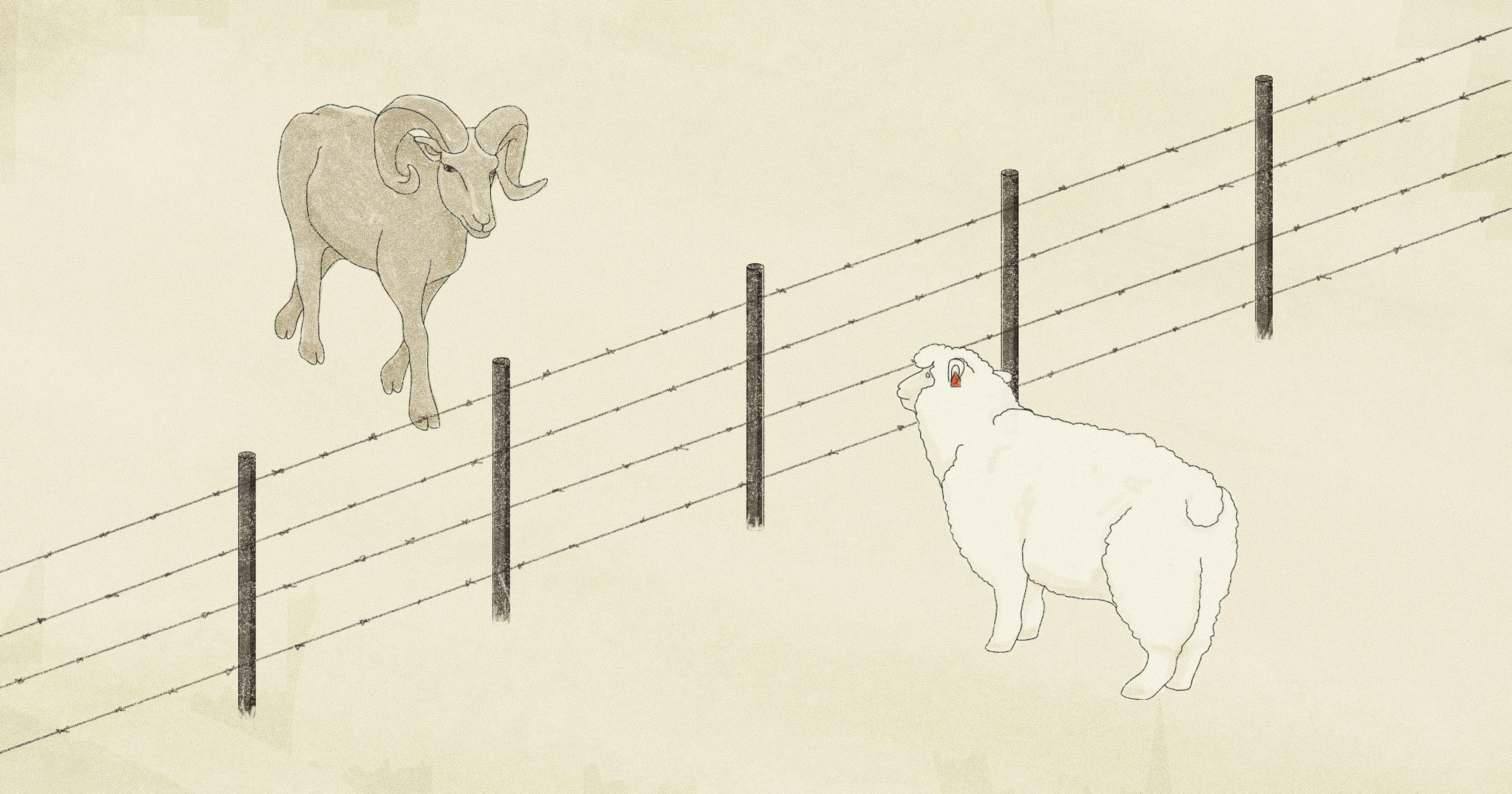The first generation of emissions-reducing feed additives has started to come online — but not in the U.S.
As a researcher who has spent more than 20 years studying the problem of methane emissions from cattle production, Ermias Kebreab still remembers when he came across some early research on the red seaweed asparagopsis in 2016.
“I’d seen a lot of papers published … that showed big mitigation potential, but when it was done in real animals, it didn’t really work,” said Kebreab, associate dean of the College of Agriculture and Environmental Sciences at the University of California, Davis. Potential feed additives like sulfates, nitrates, and even some spices all theoretically had the capacity to reduce emissions from cattle — in practice, it was hard to feed these options at scale without harming the animals.
But asparagopsis seemed different. So Kebreab called up a colleague to ask for help getting funding to test this new red seaweed. The potential, he said, was simply too great to ignore.
Enteric emissions — releases of methane gas from the fermentation that occurs when cattle eat — accounted for 27% of all U.S. methane emissions in 2020, according to the Environmental Protection Agency. That number is quite significant once you understand how methane works, Kebreab said.

Unlike carbon dioxide (or CO₂), which stays in the atmosphere for thousands of years, methane dissipates relatively quickly, which means that its impacts on global climate are relatively short-lived. But this doesn’t mean it’s more important to address CO₂ than methane, Kebreab said. Methane’s short lifespan means that eliminating it has a more immediate, visible impact on the environment.
In trials by Kebreab and others, asparagopsis has been shown to reduce methane emissions from cattle by up to 80%, with no ill effects for the animals. And now that the first versions of other, comparable feed additives have begun to hit the market, a sizeable chunk of methane from agriculture could disappear from Earth’s atmosphere within 10-12 years if these additives are fed to enough cattle worldwide, Kebreab said. (It could take thousands of years to feel the effects of reducing CO₂ emissions by a comparable amount.)
“Basically in the next decade we could see a slowing down of global warming,” Kebreab said. “We have to get off fossil fuels one way or another, but the methane issue — if you do something about methane now, you will have quicker results in the near future.”
Nutrient Cycling
The development of feed additives to reduce emissions from cows has moved surprisingly fast since research began in earnest a mere five or six years ago, Kebreab said — asparagopsis is no longer the only feed additive to show promise in curbing methane. An organic compound called 3-NOP (or under its brand name Bovaer) has shown similar results. Multiple trials have shown that a quarter teaspoon of 3-NOP per day per cow reduces overall enteric methane by an average of 30-45%, according to Mark van Nieuwland, vice president for Bovaer at manufacturer DSM. Bovaer has been authorized and sales are underway in more than 40 countries, including in the European Union and in major cattle-producing countries such as Brazil, Chile, and Australia (but not the United States).
3-NOP is synthesized in a lab by combining nitrate and alcohol. But it mimics other chemicals that exist in nature, including those in asparagopsis, according to Tim McAllister, principal research scientist at the Lethbridge Research and Development Center in Canada. In plants, these chemicals could serve as a defense mechanism that discourages herbivores like cattle from eating them by interfering with digestive processes. Some chemicals within this group, such as tannins, are known to reduce feed intake in cattle. Others, like the nitrate from which 3-NOP is derived, can be toxic to cattle in high doses.
But in the right dose or combination, these natural chemicals may have a number of benefits, including the significant reduction of enteric methane, McAllister said.
There is still no long-term research on consuming these feed additives for extended periods of time.
Not every compound shown to mitigate enteric methane has the same effect on cattle digestion, but 3-NOP and asparagopsis happen to work in similar ways. Both reduce methane by binding enzymes that are responsible for combining carbon with other gasses in the rumen to form methane. But when it’s not released into the atmosphere as a gas, the carbon doesn’t just disappear. Instead, under some conditions it appears that the left-behind carbon may act as an extra source of energy, improving milk and meat production.
Feeding 3-NOP increased animals’ productivity by some 4% across multiple trials, according to DSM. “What we’re really talking about is nutrient cycling, and capturing more of those nutrients toward more productive purposes than atmospheric emissions,” McAllister said.
It’s not yet clear just how far you can go with this particular set of additives. Some studies have demonstrated emissions reductions as high as 80 to 90% — and this with no observed negative effect on the animals. But it’s important to note, McAllister said, that there is still no long-term research on consuming these feed additives for extended periods of time.
And even if you can use something like asparagopsis to cut emissions from cattle by 80% indefinitely, McAllister doesn’t believe it will be possible to achieve a 100% reduction with feed additives alone. As promising as these new feed additives may sound, he said, it’s still important to consider other avenues for reducing greenhouse gas emissions and combating climate change.
Expanding Access
In spite of the accelerated pace of research into feed additives that address enteric methane, there remain some unsolved challenges. Scale, in particular, remains a barrier to widespread production and distribution. Asparagopsis, for example, has never been grown or produced at industrial scale. And while producing a lab-made compound like 3-NOP at scale may be more straightforward, this product is intended for use within specially formulated animal feeds.
Of all the emerging solutions, none has yet been adapted for use with, say, grass-fed beef cattle, in less industrialized settings where there is no controlled diet to which to add a powdered feed additive, McAllister said.
Australian startup Rumin8 is one of the companies looking to create products to address these more diverse use cases. In doing so, they — with the help of funding from the Australian government and several international investors — hope to make the benefits of these products more widely accessible, particularly in low- and moderate-income countries.
“If we are going to provide solutions that are widely adopted, and as a result of that have a material impact [on climate change], we’re going to need to achieve two things,” said Rumin8 co-founder and CEO David Messina. “They need to be available at a cost that producers [can afford], and they need to be available in a range of different formats so that producers have a choice as to how they integrate them.”
To market its products in the U.S., Rumin8 must undergo a regulatory process that will span five years at minimum.
Rumin8 is currently looking at three possibilities. The first is a relatively straightforward granule product containing the active ingredients from asparagopsis. The granule could be easily added to any feed mix or supplement with relative ease so it would be similar to the dried asparagopsis products featured in most scientific trials to date — but it wouldn’t require figuring out how to grow seaweed on a mass scale.
The other two options take the Rumin8 concept a step further. One option involves creating a slow-release capsule that could mitigate emissions without daily feeding. This is more technically complicated than the granule and is taking longer to develop, Messina said. But were Rumin8 successful in creating such a product, it might provide free-range producers with an option for mitigating methane emissions that doesn’t require daily feeding.
The final idea, Messina said, involves incorporating the compounds from asparagopsis into a powdered product that could be dissolved into drinking water. Early tests of this product by Rumin8 show great promise, Messina said — so much so that the company has shifted its focus from the more straightforward granule to focus on the powder.
“We’ve just seen the first lot of results come through, and they’re very encouraging,” Messina said. “We’re getting high efficacy rates, and we’re about to start a large-scale animal trial here in Australia where we will dose our product in a water trough. That opens up a whole range of opportunities for producers in a setting where they are grazing … so that may be closer than we thought even a few months ago.”
Once some larger-scale trials are complete, Rumin8 can begin to scale up production in earnest, Messina said. They aim to have their product fed to five million cows in the next two to three years, and hope to reach 100 million cows within a decade.
But the timeline to reach producers within the U.S. looks somewhat longer, Messina said. When a company like Rumin8 or DSM claims to have a product that reduces methane emissions, U.S. regulators view that product as a drug intended to treat a health condition — federal climate change priorities haven’t quite caught up with our regulatory infrastructure. And that means that currently, for Rumin8 to market its products in the U.S. they must undergo a regulatory process that will span five years at minimum, Messina said.
Regulatory Delays
With sales of 3-NOP already underway in some 40 countries outside the United States, including the European Union, the lengthy regulatory process required by the Food and Drug Administration (FDA) has become a source of angst for both manufacturers like Rumin8, and for environmentally conscious dairy and cattle producers. Emissions-reducing feed additives — in any form — are not expected to become available within the United States any time soon.
“The U.S. tends to lead the way, particularly when we talk about technology, but this is an area within agriculture where the FDA is … holding up innovation and holding up the ability of American producers to mitigate their methane emissions,” Messina said. In many other comparable countries, he said, the approval process Rumin8 must undergo is expected to take about two years. In New Zealand, he notes, the process has been expedited to help producers comply with a methane tax that is expected to take effect in 2025.
“It’s an absolute contrast,” Messina said. “The U.S. is the standout market because of the scale, the number of animals.” That said, he thinks that FDA’s pathway to market and registration is “completely out of line with the rest of the world.”
A spokesperson for the FDA said the agency is currently evaluating how its policies can be “updated to reflect evolving scientific knowledge and promote innovation,” and that the agency has sought public input to that end. The agency held a listening session on feed additives this October and solicited written comments from stakeholders in November.
“As animal food and veterinary medical sciences advance, we are working to address practical challenges presented by our regulations,” Dr. Steven Solomon, director of the FDA’s Center for Veterinary Medicine, said during the listening session. “Our regulatory decisions should be based on the best science available, while ensuring the safety of the products that our animals are consuming and the foods that we are eating ourselves.”
“When you try to solve a key problem like this you want to take as many approaches as possible.”
In the meantime, some animal and animal feed producers seem to have taken matters into their own hands, Cathryn McCandless, senior environmental scientist with California’s Department of Food and Agriculture, told the FDA during the session. McCandless testified that California regulators have already encountered animal feeds containing asparagopsis, 3-NOP, and other additives intended to curb methane emissions in spite of the fact that these products are not yet FDA-approved. Farmers in California may feel pressure to adopt as-yet unapproved products in order to comply with an aggressive state-level policy that aims to reduce methane from livestock by 40%, McCandless said.
There are some solutions available to U.S. producers that don’t require a special feed additive. Research in Canada — a major producer of canola oil — has determined that adding canola or other vegetable oils to feed formulations will reduce methane emissions from cattle. Other strategies like improving the quality of rangeland vegetation may also reduce cattle emissions, as will most efforts to improve feed efficiency, McAllister said. In general, if you reduce the need for feed or improve its digestibility, it will reduce the carbon intensity of the final product.
But each of these strategies comes with drawbacks of its own, McAllister said. You can’t control the weather, which means you don’t have complete control over the quality of your rangeland, for example. And some effective strategies for reducing methane emissions, such as the use of hormonal implants that help cattle grow faster with less feed — and therefore fewer digestive emissions — have proven unpopular with consumers and activists who argue that more “natural” means of livestock production are better for human and animal health.
There is also the reality that these strategies don’t achieve nearly the same scale of emissions reductions observed in research studies of asparagopsis. Canola oil, for example, will cut methane emissions by just 4% for every one-part-per-hundred of oil added to the diet — and there’s only so much canola oil you can add to cattle diets while maintaining optimal digestion.
U.S. dairy farmers are losing ground to competitors from countries that have approved emission-mitigating feed additives on international markets.
So while these options certainly exist, regulatory barriers are currently stymying livestock producers with achieve climate-related ambitions, according to Jamie Jonker, chief science officer for the National Milk Producers Federation, told the FDA in October. Jonker said members of the federation have committed to achieving greenhouse gas neutrality by 2050.
“There are a variety of things that we can do today to help reduce enteric methane emissions per gallon of milk produced, but there are other things that need additional research and, frankly, the ability to have a regulatory approval pathway that is not prohibitive,” said Jonker, who also noted that U.S. dairy farmers are losing ground to competitors from countries that have approved emission-mitigating feed additives on international markets.
Climate change and carbon emissions, McAllister said, are big problems, and not easy to solve, “so generally when you are trying to solve a key problem like this you want to take as many approaches to developing a solution as possible.”
In the long-term, doubling up on emissions strategies may prove not only effective, but essential for eliminating the methane that is still left over when cattle feed on asparagopsis. And the growing number of options has Messina, in spite of his frustration with the FDA, feeling optimistic about the future of climate-friendly agriculture.
“I think we learned from Covid that when we take the global approach and combine resources, that we are able to come up with some pretty exciting things,” he said. “Have we started later than we should have? 100%. We have some catching up to do if you want to come anywhere near meeting [carbon emissions] goals. But are we going to get there? I think so.”







